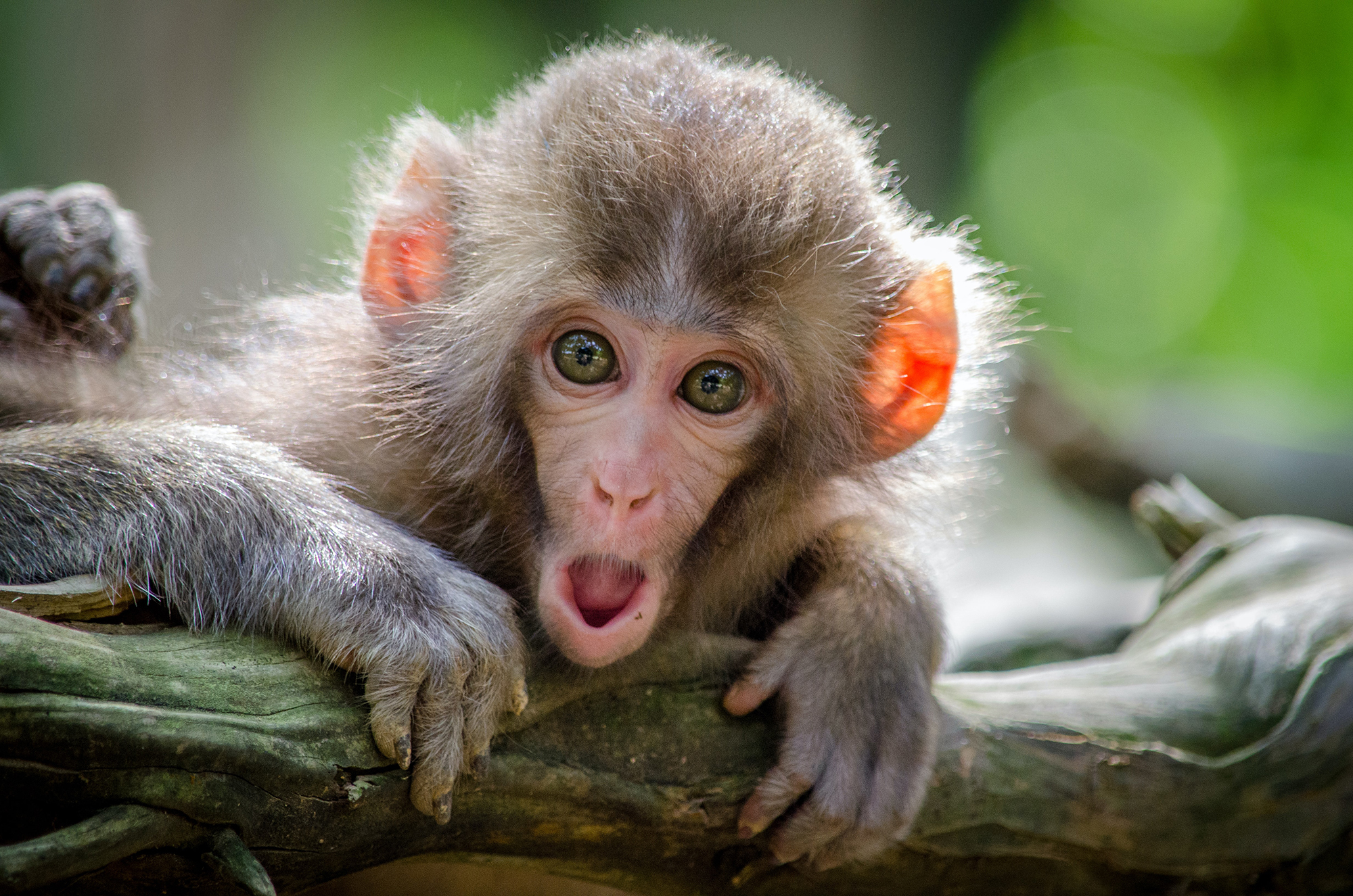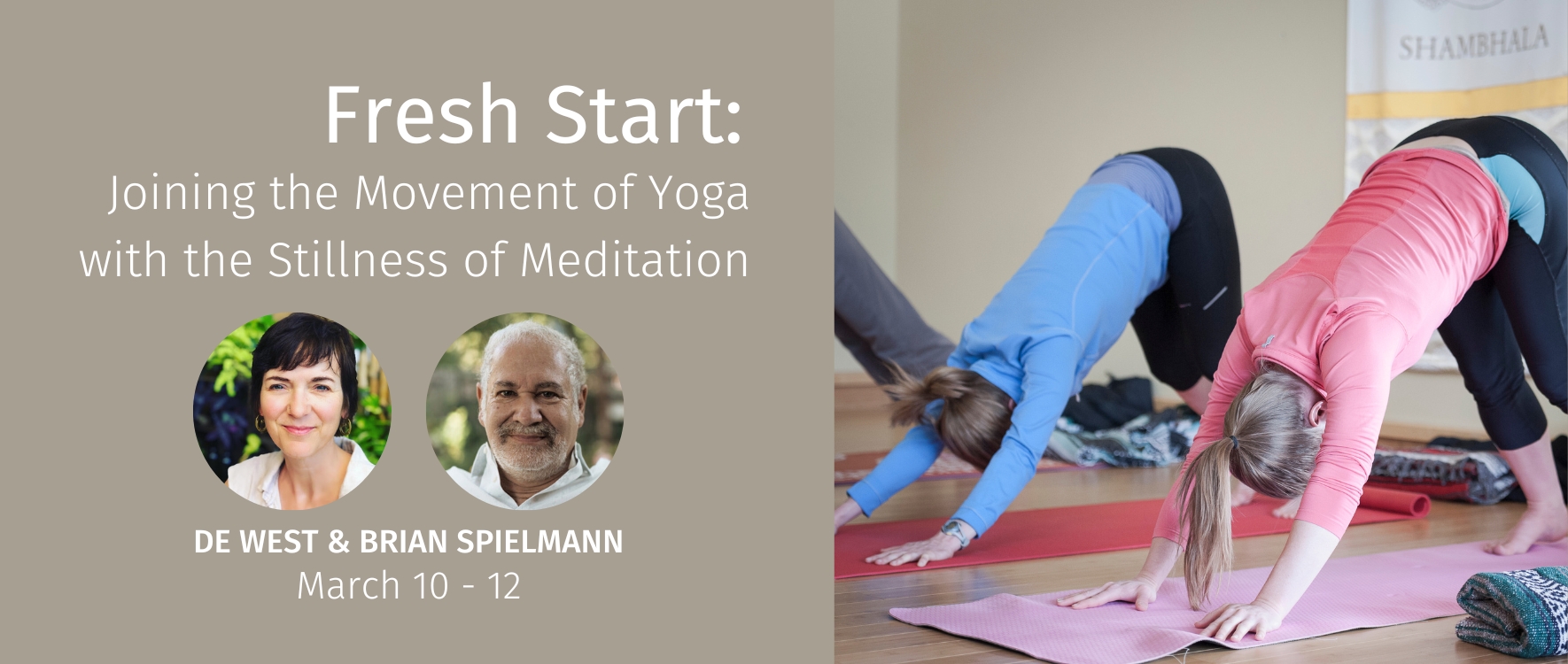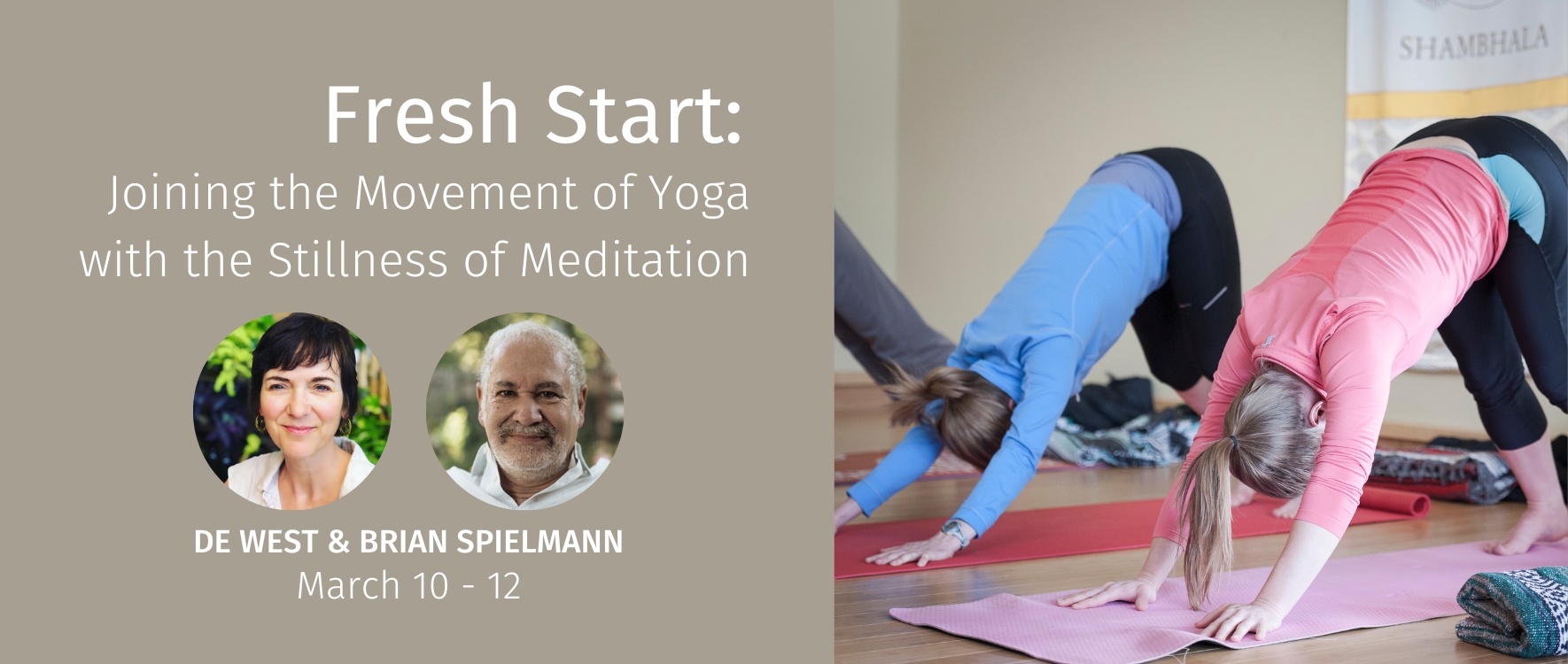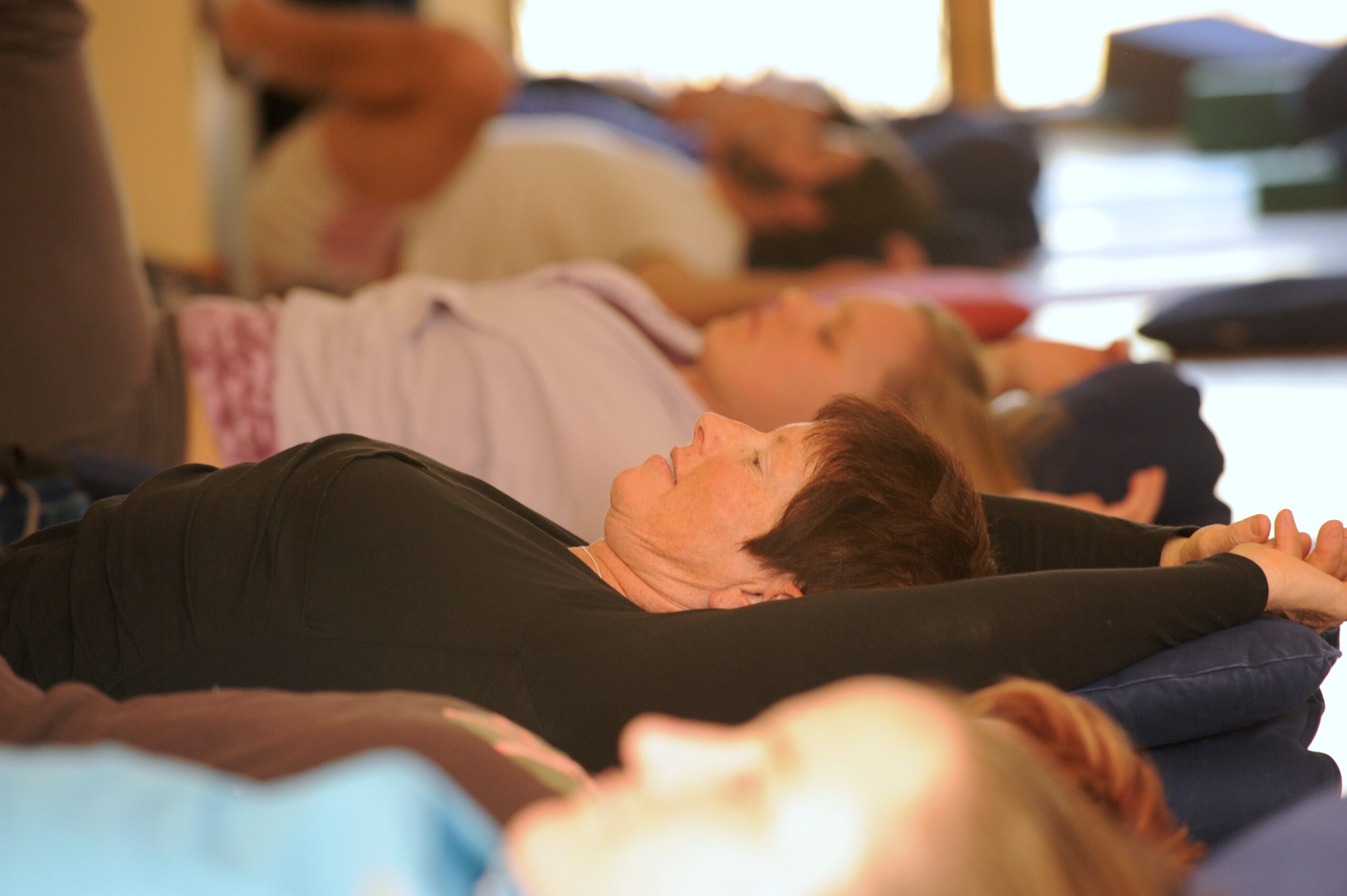Resting the Monkey Mind
by Brian Spielmann
De West and I are settling in for her annual week-long yoga retreat in Yucatan, Mexico. The area we are staying in is habitat to the Yucatan Spider Monkey, who get their name from how they look while hanging from trees by their tails.
Watching these agile, acrobatic primates — who seldom touch the ground — jump from tree to tree, I am aware of how my own restless mind speedily jumps from one thought to another. While my passport is stamped and I am officially on vacation, my thoughts don’t seem to take a holiday. My restless, moving mind, left unchecked, creates a host of emotional and mental afflictions. Like so many others, my mind can take me into the quicksand of passion, anger, jealousy, and ignorance.
So how do we rest our mind?
The Buddha’s teachings point us directly toward “taming one’s mind.” The Buddha had no interest in presenting another belief system or any dogma. He focused on practical, grounded ways to work directly with our mind.
The initial teachings, particularly, point to how to settle our distracted mind and find stability in calmness. Our meditation journey begins like a muddy lake in the springtime; the thaw melts the ice on top and you can’t see the bottom. Over time, the lake naturally settles — like our mind during meditation — until we can finally see our reflection in the water. Newer meditators sometimes get startled when their mind slows down enough and they see their skeletons at the bottom of the lake! They think meditation created them, not realizing they were already there.
We can approach meditation as either trying to accomplish something or eliminate something. Attempts to accomplish and, to get more of something, will never get us to real freedom. Meditation is a continuous practice of letting go that eventually (or suddenly) leads us to realize the mind’s innate, natural essence of clarity and emptiness.
In meditation practice, we work with our physical body, our subtle body (the breath, prana, nervous system), and our mind. As we approach the cushion, there is a sense of a Queen or King taking their seat. The posture with our legs crossed, hands resting on our thighs, straight back, and open chest automatically provides a sense of dignity and regalness.
The body is relaxed and still. Our eyes are preferably open and still, our tongue positioned at the roof of our mouth. Our breath is natural and uncontrived — free range and organic. We are letting the breath have its own waves of inhalations and exhalations. While box breathing and other breathing practices have their purpose, here we are resting in an unmanipulated manner.
Lastly, we have our wonderful, beautiful thoughts—these may range from an intense, roaring 200-foot waterfall to a light-flowing stream. We neither engage nor ignore these thoughts. There is a sense of equanimity regardless of whether you discovered a new math formula or were lost in rage. We are not holding or trying to cultivate anything. We are letting the mind be free.
Tibetan Meditation teacher Tsokyni Rinpoche gives these beautiful instructions.
“… sit nicely while being totally free and at ease inside yourself. Let yourself be very open and free within, because otherwise it’s very hard to really practice the Dharma. As a matter of fact, it’s hard to do anything! Settle your body in a pleasant, gentle way, and within your mind be free from hope and fear. Don’t try to make yourself feel anything or think of anything. Don’t try to not think of anything either. Allow whatever thought or emotion that arises to simply unfold.”
In moments when we feel lost in the intense stickiness of our thoughts, hopes, and fears from the past and future, we can always come to our body and our out-breath and have a fresh start.
As the monkeys swung overhead, I was reminded to practice…
This is the art of doing nothing.
Do a little “nothing” with De and Brian this March!
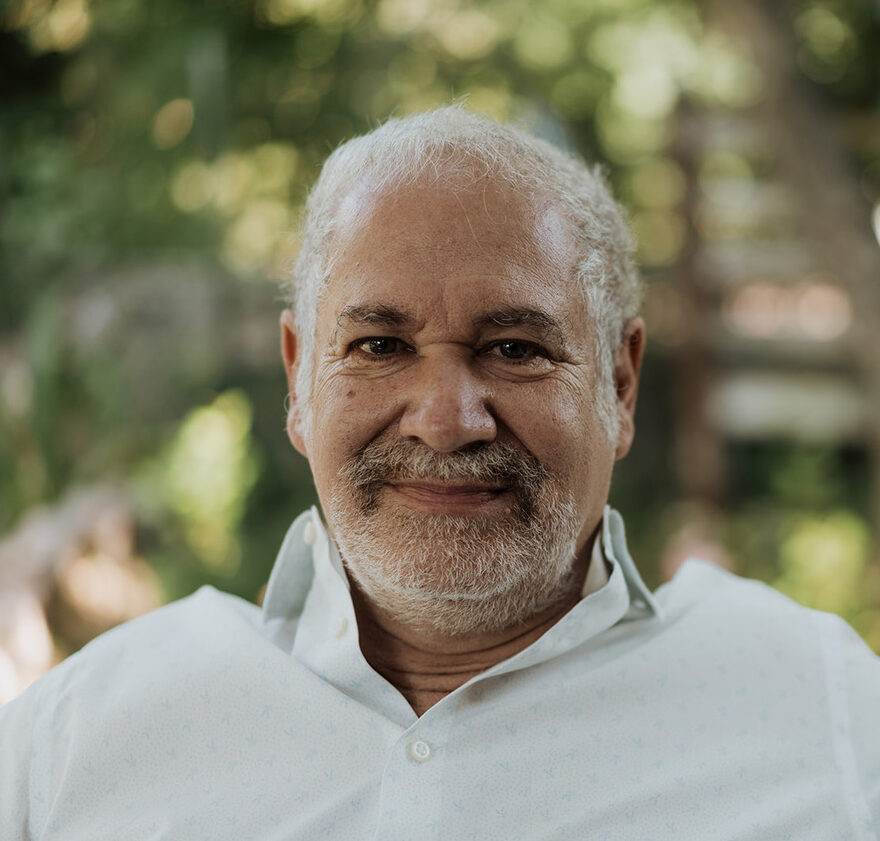
About Brian Spielmann
Brian Spielmann has been a Buddhist practitioner for 30 years and has studied with a variety of teachers including Ponlop Rinpoche, Tsokyni Rinpoche, Khandro Rinpoche, and Tulku Thondup. He previously served as Director of Marketing and Business Development for Shambhala Mountain Center and in 2010 he Founded Authentic Presence, Inc, a digital marketing firm that creates online courses with nationally known experts, particularly in the therapy, spiritual, and wellness fields.
Spider Monkey Photo by Jamie Haughton on Unsplash

